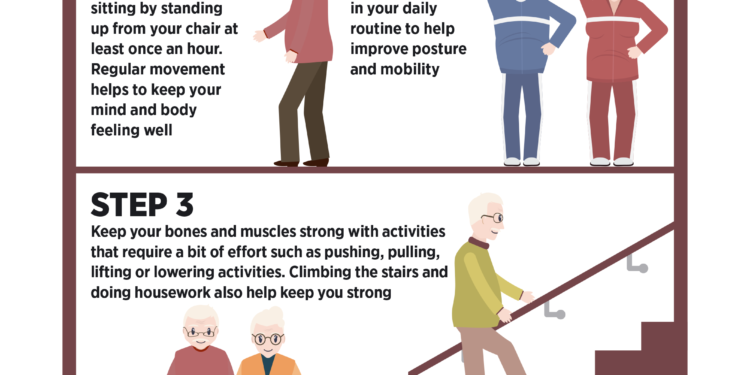Minister Mary Butler, Minister of State for Mental Health & Older People, today launches the Irish Hip Fracture Database (IHFD) National Report 2020 at the Irish Hip Fracture Meeting 2021, hosted online by the National Office of Clinical Audit (NOCA). The 2020 report places a key focus on Being Active at Home. Due to COVID-19, many people were spending more time in their homes, resulting in reduced activity levels. A clear message is that keeping active throughout the day can help older adults to keep well physically, reducing the risk from harmful falls, and mentally by continuing to be part of their communities.
In 2020, despite the impact of COVID-19 on our health service, the IHFD collected data from all 16 acute hospitals on 99% (3,666) of patients aged 60 years or over who were hospitalised following a hip fracture. The consequences of this common, serious injury for the individual, society and our health system are significant. For individuals, a hip fracture affects mobility and function, where they live, and even their survival.
On opening the meeting Minister Butler said: “I am pleased to open the Irish Hip Fracture Meeting 2021 and to launch the Irish Hip Fracture Database National Report 2020. This is the 8th such National Report and its findings also provide information on prevention with key messages to help older people ‘Stay Safe at Home’ and ‘Be Active at Home’. As we are all aware, worldwide, hip fracture continues to be a serious and sometimes life changing injury sustained by older people. This can impact hugely on individuals and their families. Indeed, a hip fracture, which sounds like a straightforward medical issue, can actually significantly decrease people’s independence and affect their day to day lives. Transparency and regular reporting on the performance of our health service is important if services are to develop and improve. The report demonstrates that audit could and should be used as part of a quality improvement cycle, which is integral to the patient safety agenda, both nationally and at hospital level.”
The Minister added: “This report contains audit results that were gathered during a very challenging time for our health service and I would like to acknowledge the work of all involved. Their efforts mean the health services can continue to understand and improve hip fracture care in Ireland even in a changing environment for patient care.”
Mr Conor Hurson, IHFD Orthopaedic Lead, presented the key findings from the report. He commented “2020 was a year like none other in terms of testing the resilience of the health service. This report demonstrates not only the hospitals commitment to best practice care standards but also to quality improvement through engagement with this audit. We want to take this opportunity to thank and acknowledge the fantastic work of our front-line healthcare workers during such challenging times.”
KEY FINDINGS
- Home continues to be the place patients are most likely to be admitted to hospital from with a hip fracture (85%).
- The average age of hip fracture patients is 81 years and over two-thirds (67%) are female.
- 33% of patients were admitted to an orthopaedic ward or went to theatre within four hours, an increase from 25% in 2019.
- 75% of surgeries were conducted within 48 hours and within normal working hours.
- 56% of patients received a nutritional risk assessment to identify risk of malnutrition.
- 82% of patients were reviewed by a Geriatrician in hospital.
- Prior to discharge, 85% of patients had a specialist falls assessment.
- 91% of patients had a bone health assessment.
- 78% of patients were mobilised by a physiotherapist on the day of or day after surgery.
- 28% of patients were discharged directly home from hospital following a hip fracture.
Bibiana Savin, Patient & Public Interest Representative for the IHFD added “The patients journey within health and social care settings posed additional challenges during the first year of the COVID-19 pandemic: visiting restrictions, lack of direct interactions with family or friends, limited supports during hospital admissions, during their hospital stay or post-discharge, strange interaction with others through personal protective equipment, adjusting to new public health guidelines to stay at home and unprecedented generalised isolation. Both patients and frontline personnel showed great resilience and strength in overcoming these challenges and learning from these experiences should be incorporated in quality improvement initiatives for years to come.”
Copies of the report will be available to download from www.noca.ie.










